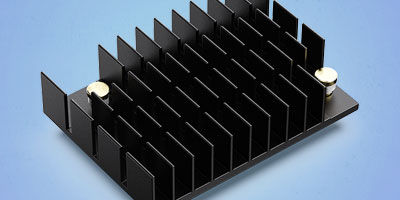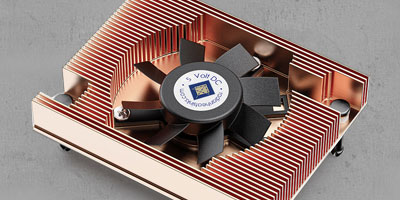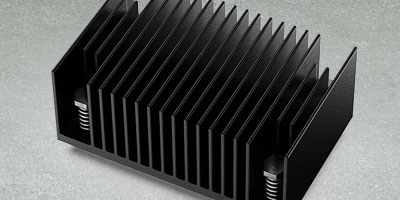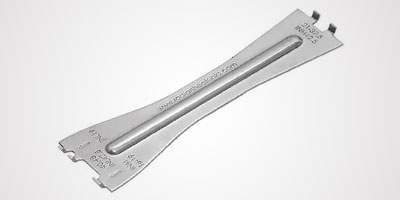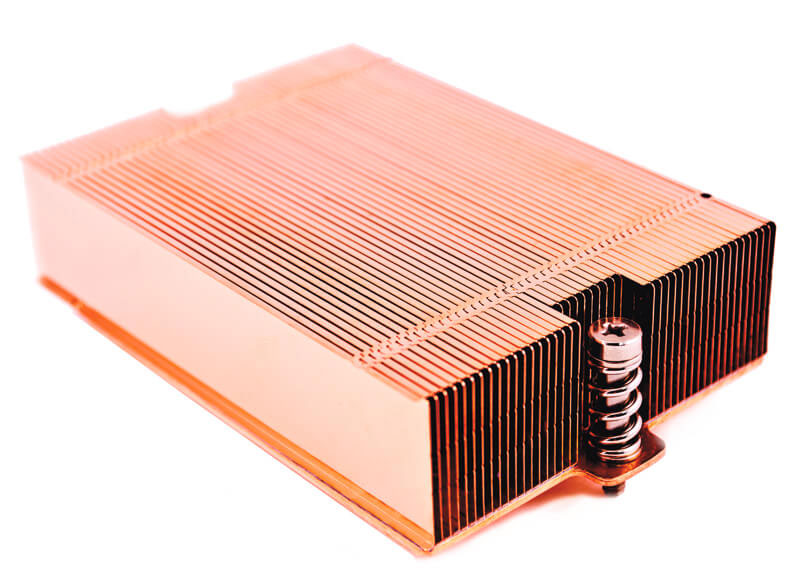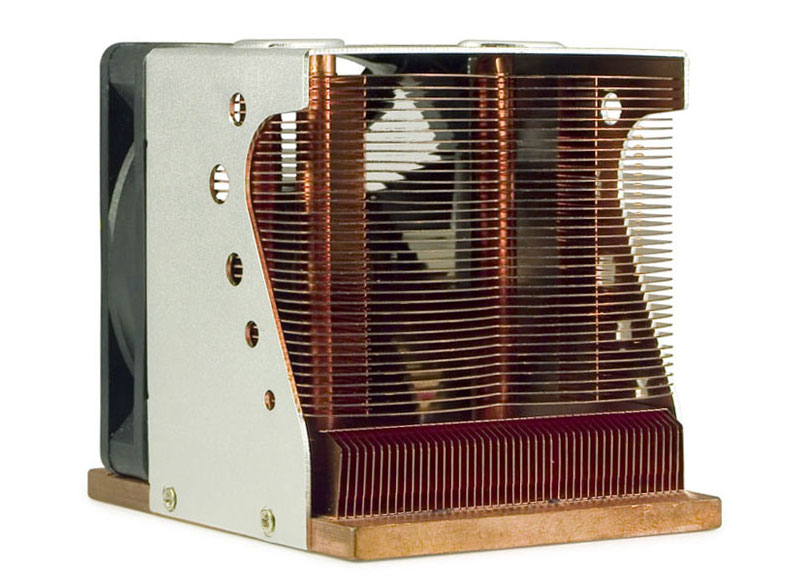A Stamped Fin Heatsink can usually be identified by the zipper fin plates that hold the fins in place, and it is usually very easy to see that the heatsink is two parts – the base, and stamped fin. The Stamped Fin Heatsink is made using a die stamping process where metal sheets of aluminum or copper are stamped into a particular configuration based on the intended application. The Zipper fins are manufactured during the stamping process to create interlocking fins. The zipper fin heatsink can add additional strength to the heatsink, and can allow for different shapes of the stamped fins. The stamped die fins are then smoothed with a sanding belt, and these stamped fins are then attached to a heatsink base typically using solder. For maximum design flexibility, a Stamped Fin Heatsink can be stamped into a broad range of geometries and thicknesses. The Stamped Fin Heatsink Technique offers a good approach for producing high efficiency, high aspect ratio, lightweight heatsinks in small package sizes, and is a good choice for medium to high volume production. This technique also offers a low Non Recurring engineering charge, so prototype set up costs are minimal.
HEATSINK TECHNOLOGY
STAMPED FIN HEATSINK
WHAT IS A STAMPED FIN HEATSINK?
An Aluminum Stamped Finned Heatsink can be manufactured using the A6063 Aluminum alloy which produces a high thermal conductivity of ~200 W/(m-K). The Copper Stamped Fin Heatsink is typically manufactured using C1100 which produces a very high thermal conductivity of ~400 W/(m-K).
Stamped Fin Heatsink Examples
In this example a copper stamped fins were attached to a vapor chamber to create a very high performance heatsink. Two zipper fins were used to create a solid structure, and a cut out was created to allow for the push pin location.
In this example, a stamped fin heatsink was attached to a fan to create a very high performing fansink.
